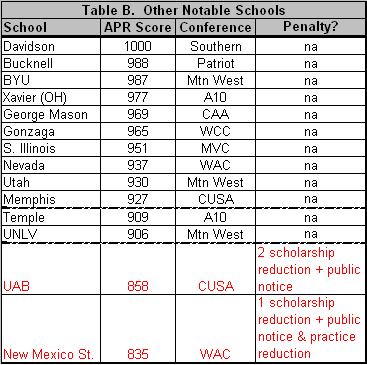RTC Conference Primers: #30 – MEAC
Posted by rtmsf on October 5th, 2010RTC is still seeking a MEAC correspondent. If you are interested in covering this league, email us for further information at rushthecourt@yahoo.com.
Predicted Order of Finish
- Morgan State (13-3)
- South Carolina State (12-4)
- Norfolk State (10-6)
- Delaware State (9-7)
- Bethune-Cookman (9-7)
- Maryland-Eastern Shore (8-8)
- Hampton (8-8)
- Howard (7-9)
- North Carolina A&T (6-10)
- Coppin State (4-12)
- Florida A&M (2-14)
- Savannah State (*provisional member — ineligible for postseason and league awards)
- North Carolina Central (*provisional member — ineligible for postseason and league awards)
All-Conference Team
- CJ Reed (G) — Bethune-Cookman
- Hillary Haley (G) – Maryland-Eastern Shore
- DeWayne Jackson (F) — Morgan State
- Kyle O’Quinn (F) — Norfolk State
- Kevin Thompson (F) — Morgan State
6th Man
- Darnell Porter (G) — South Carolina State
 Impact Newcomer
Impact Newcomer
- Dominique Sutton (F) — North Carolina Central. NCCU isn’t yet playing a complete MEAC schedule nor is it eligible for postseason play this year, but the Eagle program is already making noise on the recruiting trail with the announcement of high-major transfer Sutton returning to Durham to suit up for his hometown team. As of this writing, the 6’5 junior forward who averaged 7.2 PPG and 5.8 RPG as a full-time starter last season for Kansas State was practicing with the team and awaiting an NCAA decision on whether he can play this season. He moved back east to be closer to his girlfriend and two daughters in Durham, and the wing player who terrorizes the glass on the offensive end (especially given his size) will automatically become one of the best players in the MEAC as soon as he is eligible.
What You Need To Know
- All Morgan, All the Time. Todd Bozeman has built a powerhouse in Baltimore to the tune of three straight regular season titles, two straight NCAA bids, and a 46-6 record against MEAC teams the last three seasons. But like all consistently great programs, Morgan doesn’t re-build anymore as much as re-load. From Jamar Smith to Marquis Kately to Reggie Holmes to the next generation (Thompson and Jackson), Bozeman continually has high-mid major talent playing for him. The Bears’ strategy is clear — play a tough non-conference schedule to build up their RPI (beating DePaul, Maryland and Arkansas in recent years), dominate the MEAC, and get back to the NCAA Tournament. Morgan State earned #15 seeds the last two seasons, but they haven’t yet been matched up against the right team in order to pull off the upset — #2 seeds Oklahoma (2009) and West Virginia (2010) were simply too powerful inside for them to handle. Could it come this season?

















































